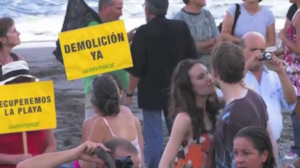Last February, we wrote about how integrated campaign teams and shifting to a campaign-first structure have helped Greenpeace Argentina run people-oriented mobilisation campaigns. For many, this may seem like a big structural shift with unclear value.
We also spoke with Greenpeace Argentina’s Martin Thinghitella and Hernan Nadal (responsible for fundraising and mobilisation, respectively). Martin and Hernan shared their experience with integrated campaigns and gave us some insight into how this setup really functions:
Martin talked about how a people-oriented mobilisation focus helps fundraising:
“…the magic system, is that we win the campaign with the people. People have to be mobilised to win our campaigns. We fundraise with these people because they are willing and happy to support Greenpeace. It makes the fundraising easy if we have done the other work.”
We don’t know that fundraising is quite as easy and Martin makes it sound here but the upshot is that people actively participating in successful campaigns are more inclined to make a donation.
Fundraising is helped by a mobilisation program that has been able to rapidly grow the organization’s network. Cyberactivist numbers in Argentina have grown from 120,000 to 800,000 as a result of recent campaigns. This was possible thanks to a significant investment in advertising as well as volunteer mobilisation.
Growth also came through an emphasis on people recruiting people. Cyberactivists were asked to recruit other activists and volunteers gathered signups at offline actions. These people also became cyberactivists and were invited to recruit others. At least 300,000 recent cyberactivists joined through these “tell your friend” activities.
A key element of success at Greenpeace Argentina has been integration of campaign teams and planning. Fundraising and communications teams are directly invested in campaign mobilisation and on-the-ground campaign results which helps the fundraising teams build stronger partnerships with other staff and vice versa. A mobilisation focus means people are engaged up front with compelling language and tools to participate and tell others.
Do you have a successful innovation or integration story to share? We would love to hear about it! Let us know in the comments or shoot us an email.
Categories:
culture and leadership



